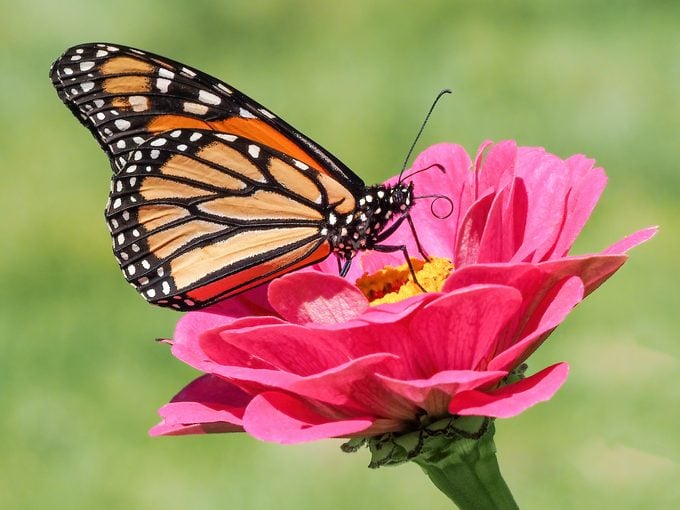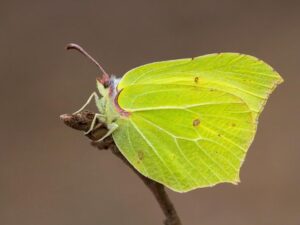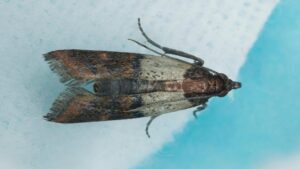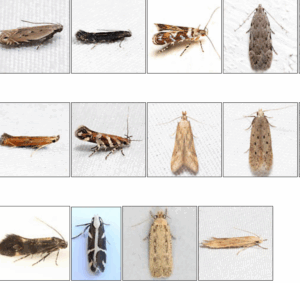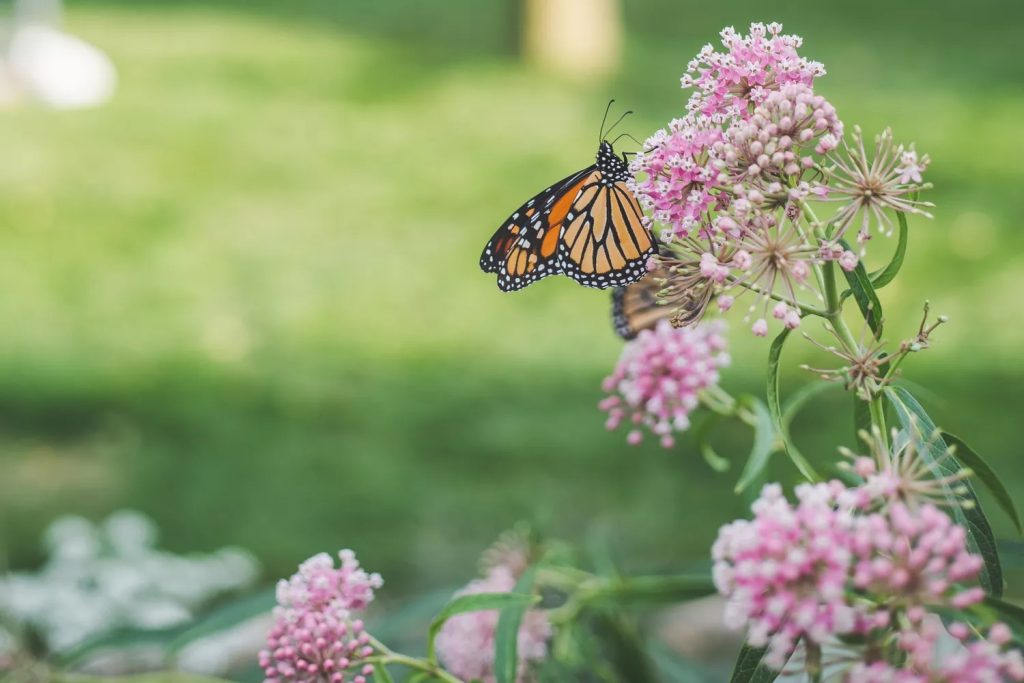
What can I feed a monarch butterfly?
Butterflies are particularly fond of sliced, rotting oranges, grapefruits, strawberries, peaches, nectarines apples, and bananas—they benefit from the nutrient-rich liquid of the rotting, fermenting fruit. Simply place on plates and put outside. The mixture can be kept moist by adding water or fruit juice.
What (and How) Do Monarch Butterflies Eat?
If you want to help monarchs, you may ask what do monarch butterflies eat? Find out the answer and learn how to give them what they need.
With the monarch butterfly now officially on the endangered species list, many gardeners are wondering what they can do to help. One important action is to provide these butterflies with the foods they need. But what do monarch butterflies eat? And how do they feed? Here are the answers.
What Do Monarch Butterflies Eat?
Monarchs eat several times a day to keep their energy up, though if food is scarce or the weather is bad, they can go a day or so without food. These butterflies mainly eat nectar from flowers. Most people associate monarchs with milkweed, and it’s true that their caterpillars dine exclusively on the leaves of these plants. Adult monarchs, however, will eat from a wide array of nectar plants, including the flowers of milkweed. Other favorite monarch flowers include sunflower, coneflower, ironweed, zinnia, lantana, penta, salvia, and many more.
Do Monarch Butterflies Eat Fruit?
Sometimes monarchs will visit fruit to get the sugary calories they need, especially in more tropical areas of their range. They’re especially fond of oranges, mangoes, and rotting bananas. You can try putting out cut-up fruit in your garden to attract them, but they may or may not visit, especially if you have a lot of nectar flowers nearby.
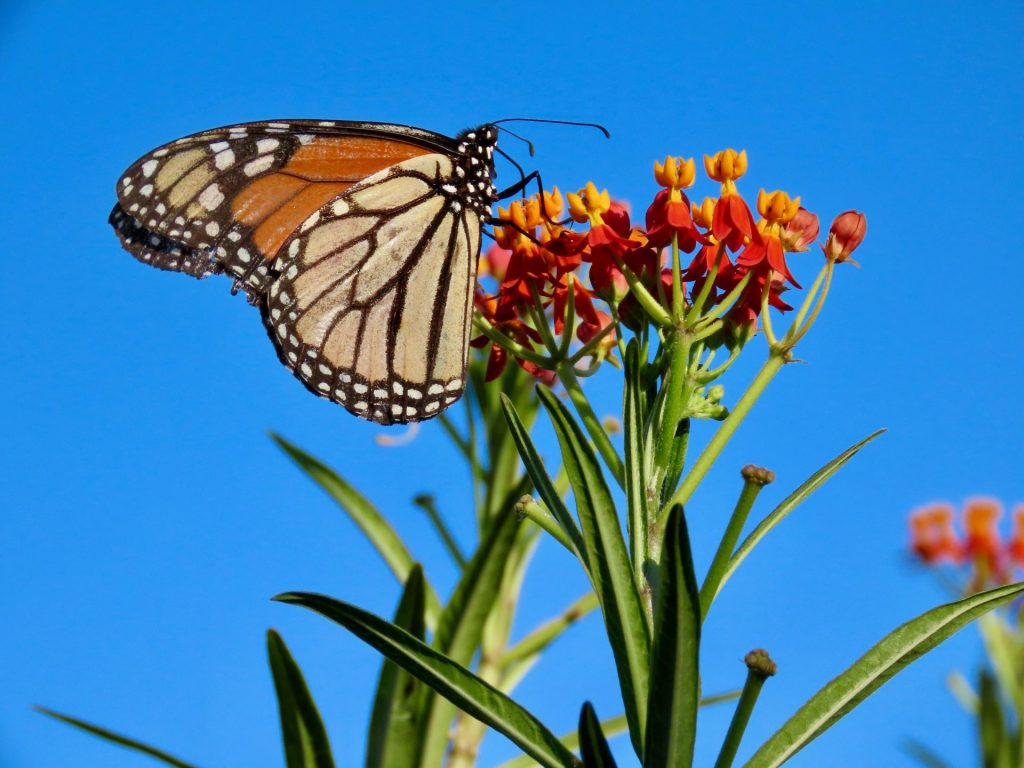
Since those nectar flowers and fruit really only provide them with sugary energy, monarchs have to look elsewhere for vital salts and other dissolved minerals. One key way they do this is by “puddling,” gathering on muddy ground or wet sand to sip the nutrient-rich water. They may occasionally land on dung or carrion to find these same nutrients. They’ve even been known to land on human heads to drink their perspiration on hot days!
How Do Monarch Butterflies Find the Right Plants?
The world is very big, and monarch butterflies are pretty small. To find the right food plants, the adult butterflies rely on several senses. Their compound eyes allow them to see nearly 360 degrees around them, and like hummingbirds, have the ability to see things humans can’t. For instance, they can spot ultra-violet markings on some plants that lead them straight to nectar sources.
Butterflies like monarchs actually “taste” with their feet. These are covered in tiny chemoreceptors that allow them to sense sugars the sugars and salts their bodies need. By landing on a surface for a split second, monarchs and other butterflies can instantly tell whether there’s something there to eat (and in the case of females, lay their eggs on).
How Do Monarch Butterflies Eat?
Now that you know the answer to “what do monarch butterflies eat,” you might be wondering just how they do it. Like all butterflies, monarchs do not have mouths. Instead, they have a proboscis (pronounced “pro-BAH-skiss” or “pro-BAH-siss”) extending from the front of their head. The proboscis is a straw-like tube that coils up when butterflies aren’t using it. Monarchs eat by extending the proboscis deep into a flower to sip nectar, or use the sharp pointed end to poke into fruit to dine on the juice.
The proboscis is actually made up of two separate tube sections that “zip” together to form a continuous channel when a butterfly first emerges from chrysalis. You can see the connection in this microscope image of a butterfly proboscis. Monarchs and other butterflies can “unzip” it for cleaning if they need to!
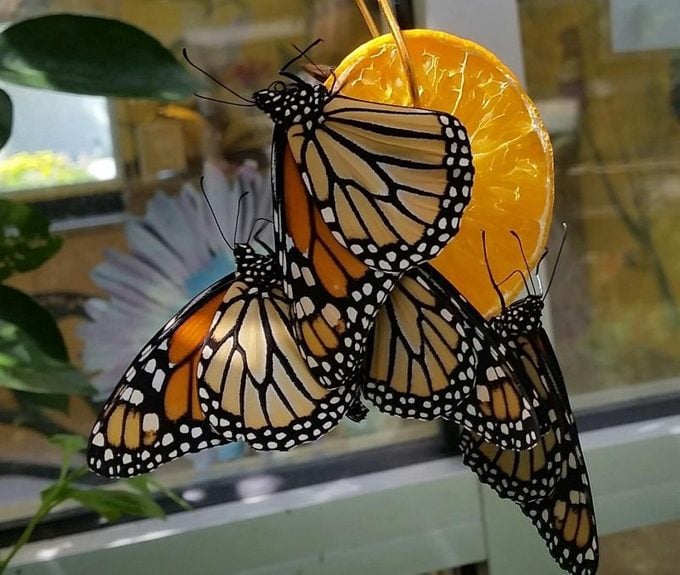
Once the proboscis is deep in the flower or fruit, a tiny sac in their head helps its muscles expand and contract to pull the nectar or sugar water in by suction. When they’re done, they’ll sometimes use their feet or another object to clean off the proboscis before coiling it up out of the way to fly.
Monarch butterflies eat nectar from flowers, just as other butterflies do. Butterfly mouthparts are made for drinking nectar. If you look at a monarch butterfly’s head, you will see its proboscis, a long “straw,” curled up below its mouth. When it lands on a flower, it can unfurl the proboscis, stick it down into the flower, and suck up the sweet fluid.
Monarch Butterflies Drink Nectar from a Variety of Flowers
If you’re planting a garden for monarch butterflies, try to provide a variety of flowers that bloom throughout the months when monarchs visit your area. Fall flowers are particularly important, as migrating monarchs need plenty of energy to make the long journey south. Monarchs are large butterflies and prefer larger flowers with flat surfaces they can stand on while nectaring. Try planting some of their favorite perennials, and you’re sure to see monarch all summer long.
What Do Monarch Caterpillars Eat?
Monarch caterpillars eat the leaves of milkweed plants, which belong to the family Asclepiadaceae. Monarchs are specialist feeders, meaning they will only eat a specific kind of plant (milkweeds), and cannot survive without it.
Monarch butterflies gain an important defense against predators by feeding on milkweed as caterpillars. Milkweed plants contain toxic steroids, known as cardenolides, which are bitter-tasting. Through metamorphosis, the monarchs store the cardenolides and emerge as adults with the steroids still in their bodies.
The caterpillars can tolerate the toxins, but their predators find the taste and effect more than unpleasant. Birds that attempt to eat monarchs will often regurgitate, and quickly learn that those orange and black butterflies don’t make a good meal.
Monarch Caterpillars Eat Two Types of Milkweed
Common milkweed (Asclepias syriaca) often grows along roadsides and in fields, where mowing practices may cut down the milkweed just as the caterpillars are feeding. Butterfly weed (Asclepias tuberosa) is a showy, bright orange perennial that gardeners usually prefer for their flower beds. But don’t limit yourself to these two common species; there are dozens of milkweed varieties to plant, and monarch caterpillars will munch them all.

